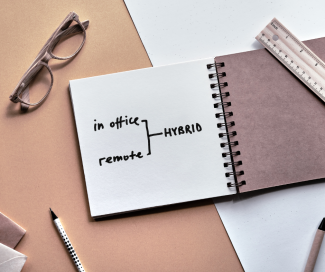
Working Remotely
If you follow the news reports about the number of remote workers and office buildings standing empty, you might imagine that America’s employees are all hunched over a laptop on their kitchen table. But a recent report by Forbes magazine finds that actually just 12.7% of full-time employees are currently working from home, and just 16% of (mostly small) companies are fully-remote, operating without a physical office.
But 28.2% of company employees are working under what has been described as a ‘hybrid model,’ which is loosely defined as having the flexibility to combine at-home and in-office work. Meanwhile, the majority of the workforce—59.1%—come to the office every day. Traditional in-office work is far from obsolete.
The more educated the worker, the more likely he or she is to be working remotely; a McKinsey & Co. report found that staff people with advanced degrees (master’s or Ph.Ds) were 50% more likely to work off of their laptops than people without a high school diploma. That may help explain why remote workers make an average of $19,000 more a year than those who are full-time in the office.
Among other findings: 57% of remote or hybrid workers say they would leave their current job if their employer stopped allowing remote work. 35% of remote employees say they feel more productive when working from home, and 65% of all workers desire to work remotely all the time. Another 32% say they would prefer a hybrid schedule. But at the same time, 53% of remote workers say it’s harder to feel connected to their coworkers than it was when they were working in their office or cubicle.
The demand from employees for more time out of the office may soon be matched by company demand that they stop coming in every day. One research report found that employers can save an average of $11,000 a year per employee if the employees switch to remote work. The savings come from reduced costs associated with office space, utilities and other in-office resources.
Source:
https://www.forbes.com/advisor/business/remote-work-statistics/

